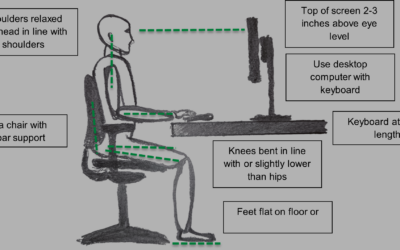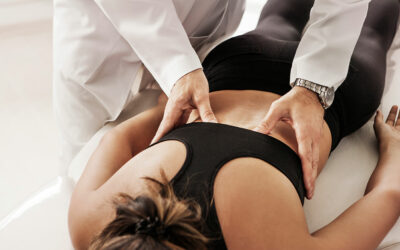Headaches are, unfortunately, something we have probably all had in common at some point in our lives. I’ve treated a lot of headaches in the clinic and, unsurprisingly, I’m yet to meet a patient who particularly likes having one. How do they work though? Should you be worried about your headache? How can we treat them? Let’s find out…
Types
The International Classification of Headache Disorders categorises headaches into Primary and Secondary. Primary headaches are the most common and consist of three main types; tension-type, migraine and cluster. These are benign and related to their own cause.
Secondary headaches are a symptom of an underlying disease or condition such as trauma to the head, stroke, tumour, infection etc. These sound quite worrying but, fortunately, secondary headaches form only 10% of headache cases (Ravinshankar, 2012). Nevertheless it is important for osteopaths to be able to recognise the symptoms associated with these types of headache and refer our patient on to the appropriate medical speciality.
The main types of headache we can treat in the clinic are tension-type, migraine and cervicogenic and I shall cover these in a little further detail.
Migraine
Migraines can affect people of all ages but tend to affect young to middle-aged adults most commonly Lipton and Bigal, 2005. Stovner et al., 2018). Females are afflicted most with migraines; with two to three times as many cases in women than men. (Stovner et al., 2018, Lipton and Bigal, 2005).
Migraines have certain typical characteristics that help us diagnose them. They have a gradual build up rather than a sudden onset and will usually last from four to seventy-two hours. Some sufferers also experience a prodrome before the headache arrives, where the sufferer can feel the headache coming on and may experience other symptoms such as lethargy, excessive thirst, mood changes or constipation etc. These tend to be consistent with each individual sufferer, which can be useful in helping to predict when a migraine is coming for that individual. Migraine headaches affect one half of the head and will have a throbbing or pulsating nature. In 20% of cases a sufferer might also experience an aura before the headache (Frontera, Silver and Rizzo, 2019). An aura can involve odd symptoms like visual disturbances, blindness, speech disturbances etc. They will then subside once the headache comes. Light and sound sensitivity is another classic symptom associated with migraines.
Migraines can be effectively treated with non-steroidal anti-inflammatory drugs (NSAIDs) like aspirin and paracetamol. For more severe migraines, triptan drugs can be very useful in alleviating symptoms. Preventative treatment is of great importance in the management of migraines. This can involve some medications like blood pressure medication, antidepressants and even botox injections. Prevention also involves reduction of common migraine triggers such as fatigue, stress, dehydration and some foods like cheese. The natural wonder-drug that is exercise can also be hugely beneficial.
It is in these preventative methods that we can help at the clinic. Osteopathy and massage can help relaxation and reduce tension but also help alleviate other symptoms such as neck pain that can occur simultaneously with migraine (stimuli from nerves in the neck can converge with stimuli from a nerve associated with many headaches (the trigeminal nerve) and add up to a lot of pain). (Goadsby, 2012)
Tension-Type
Tension headaches are the most common type of primary headache (Stovner et al., 2007). Similarly to migraines, tension headaches are most prevalent in young to middle-aged adults (Andlin-Sobocki et al., 2005) but women are only slightly more affected than men.
Tension headaches tend to cover both sides of the head and feel like a pressure or tightening over the whole head and particularly across the forehead. Tension headaches do not have the odd features of a migraine like visual disturbances and prodrome but sensitivity to light and sound can still be present. Typical characteristics include muscle tightness and stiffness in the neck and the sufferer being under stress. Chronic stress and muscle tenderness can also cause sensitization, whereby changes actually happen to some of the neurological structures in the brain and spinal cord so that even lesser pains are made a lot worse.
Tension headaches can be treated using over-the-counter medications like aspirin and ibuprofen and sometimes antidepressants. As mentioned, stress and muscular tension are a major cause so it is important to address these issues. Lifestyle adaptation is important to try to reduce stress so taking up yoga, for example, often works well for a lot of patients. At the clinic we quite like treating tension headaches because we can make a direct impact on those troublesome muscles. Massage therapy not only helps the muscles of the body to relax, but also effectively reduces the anxiety and mental stress that can cause or exacerbate headaches. Investing in regular massage will help reduce overall stress and any muscle tension that previously used to be a trigger for headache pain. Osteopathy can work in the same way and also use other techniques such as manipulation to help mobility etc. This has a physical benefit to ultimately help the more neurological issue of the headache.
Cervicogenic
Cervicogenic headaches are actually a type of secondary headache and the name simply means “generated by the neck”. Again, younger to middle-aged adults are most affected but men are more likely to have this type of headache (Sjaastad and Bakketeig, 2008).
Cervicogenic headaches tend to be over one side rather than both and can also feature neck and shoulder discomfort. Neck movements can often aggravate the headache too. At the clinic we also like treating this type of headache. There are many structures in the neck (particularly around the top three vertebrae) that can stimulate the same neurological structures as tension headaches (the trigeminocervical nucleus). These might be the joints between each vertebra or the discs that sit between the vertebrae.
The surrounding muscles can also have the same effect. All these structures can be effectively treated with massage, manipulation and exercises to get rid of that pesky cervicogenic headache.
I hope that helps
I’ve only covered three types of headache today but these are the types of headache I treat in the clinic a lot. With the right treatment and management (including exercises etc), it can be quite easy to sort those irritating headaches once and for all. If any of these symptoms feel like yours then come and see us and we’ll be more than happy to help get you back on track!



